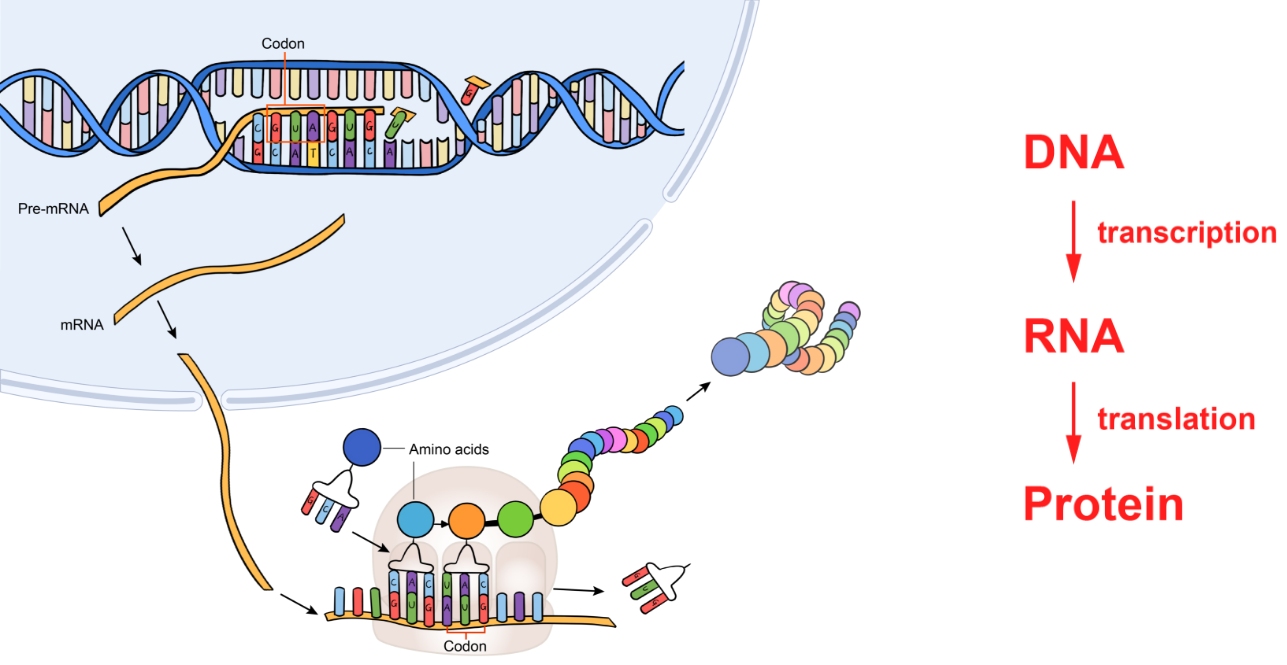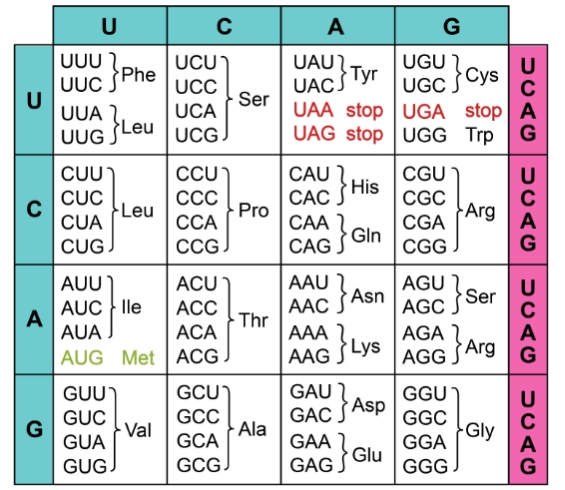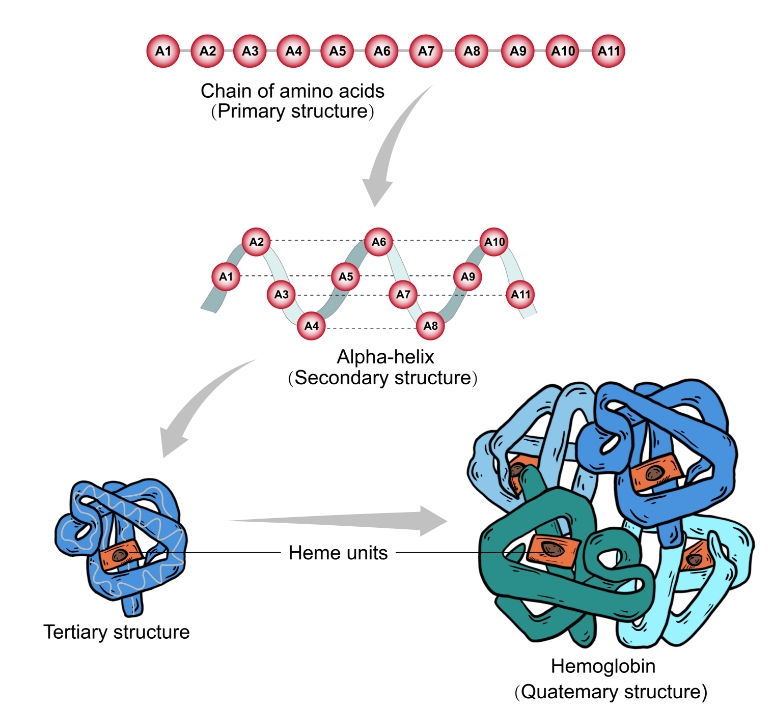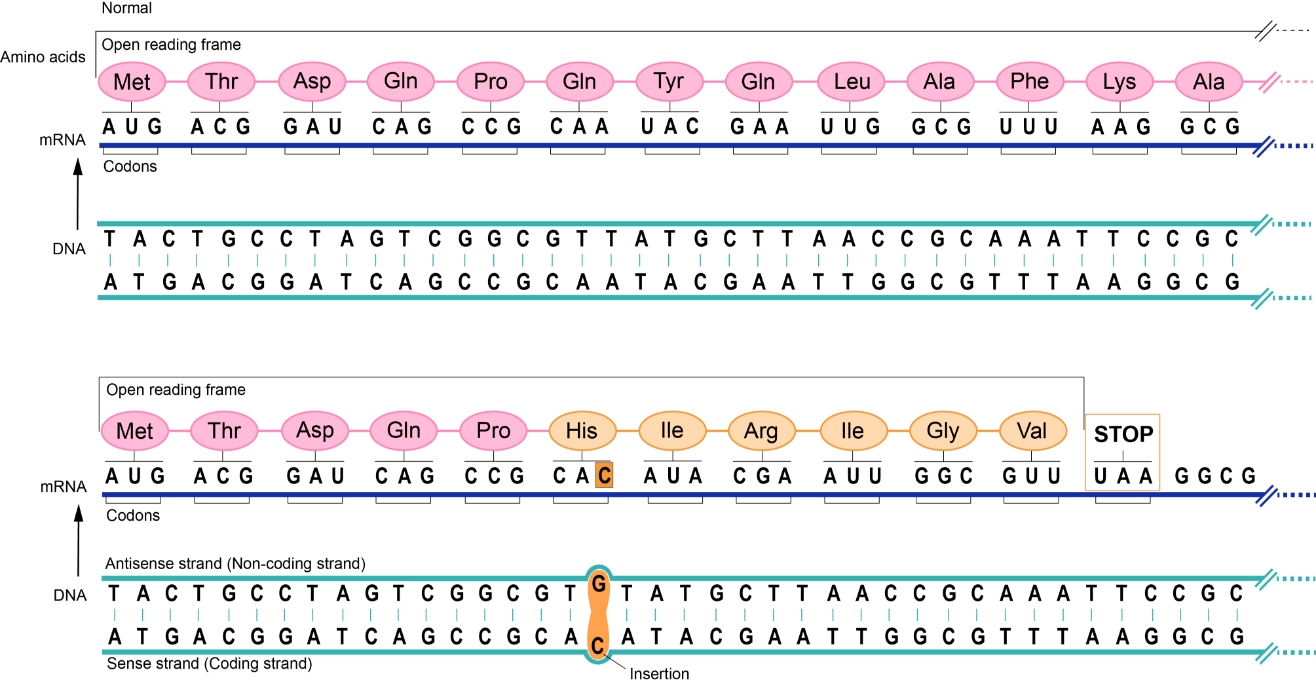相關服務
載體構建質(zhì)粒DNA制備
病毒包裝服務
mRNA基因遞送解決方案
CRISPR基因編輯解決方案
shRNA基因敲低解決方案

Input your DNA sequence below to retrieve the translated amino acid sequence.
For deeper analysis of your sequence, please check out our Codon Optimization tool, or to compare two sequences at the DNA or protein level, you can utilize our Sequence Alignment tool.
DNA contains the code to make every part of an organism, but it is just that: the instructions. Genes within the DNA code for proteins, which perform functions ranging from transport to catalyzing chemical reactions. In order to produce thousands of different proteins, there is a hierarchy of production, often referred to as the Central Dogma (Figure 1).

Figure 1. DNA is transcribed and translated into functional proteins.
The coding region of DNA is first transcribed into an intermediate, mRNA. This sequence can be broken into sections of three nucleotides, called codons, most of which code for an amino acid. There are only 20 amino acids, and many possible combinations of nucleotides, so there is redundancy in this code (Figure 2).

Figure 2. Each three-letter nucleotide sequence corresponds to an amino acid or direction (start/stop).
Once the mRNA is transported into the cytosol, ribosomes use tRNA to translate each codon into its corresponding amino acid, adding each one at a time as the ribosome moves down the mRNA. The string of amino acids is the protein’s primary structure. The amino acids interact with each other and form their most stable, lowest-energy 3D conformation, making up the secondary and tertiary structures. Multiple protein subunits can join to form a large complex as a quaternary structure (Figure 3).

Figure 3. Structural organization of proteins.
Due to the many steps between a single nucleotide sequence and a protein, small changes can have a large impact. Deleting or inserting one nucleotide causes a frame shift and can influence all amino acids that occur downstream of the mutation (Figure 4). Changing the amino acid sequence also changes the interactions and the final 3D structure. Utilizing our DNA Translation tool can help to ensure that cells will produce the expected amino acid sequence from your nucleotide sequence.

Figure 4. Consequences of a frameshift mutation.

